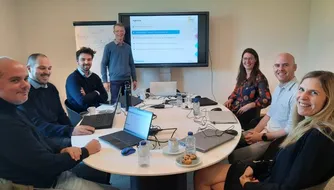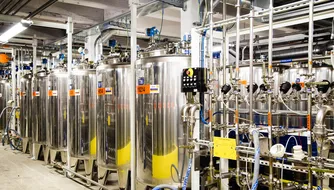Make uncertainty part of the plan

As the pandemic has made clear, uncertainty is part of the daunting reality facing businesses today.
By making uncertainty tangible, LOP.ai can help businesses to plan in an unpredictable world.
A matrix of possibility
We can’t predict the future, but we still need to make rational decisions about how best to prepare. World-class companies are realizing that they need some uncertainty-related metrics to help them to define the best possible course of action. In markets like consumer goods or pharmaceuticals, it is imperative that you can follow demand, whatever is happening in your upstream or downstream supply chain. But balancing risk, probability and cost is no easy task, particularly as business projects and risk projections grow more complex. How can we plan for something that may not happen?
All too often, organizations still ignore the uncertainty factor, treating projections as certainties and thereby leaving themselves vulnerable to surprises. This is because every well-understood element of uncertainty gives rise to a myriad of possible scenarios that are very difficult to conceptualize. It is almost impossible for the human brain to quantify these uncertainties, their probabilities and effects.
Many managers resort to instinct or ‘rule-of-thumb’ thinking in their S&OP. The result can be unnecessarily high ‘just-in-case’ costs, or a reckless lack of flexibility. When the risk-mitigation investment is too high, it takes a toll on profits; while too little investment can cause projects to fail in the face of unforeseen events.
But it doesn’t need to be this way. Today we understand that business uncertainty and risk are quantifiable and can therefore be addressed in a way that balances risk in proportion to probability.
Making informed decisions
PwC’s and LOP.ai’s new whitepaper outlines how artificial intelligence can enable optimal S&OP by calculating highly complex risk, probability and outcome scenarios. The paper divides uncertainty into four categories, and examines how each one can, or cannot, be addressed.[
1. Uncertainty we understand and plan for without consciously recognising
3. Uncertainty we consciously recognize and understand
3. Uncertainty we recognize but the effects of which we cannot predict
4. Uncertainty that is not even on our radar – we aren’t aware of not knowing it
Strong foundations
S&OP is one of the most performance-enhancing processes in an organization. Incorporating uncertainty into this process is essential for laying the foundation of resilience. By directing decisions about capacity, investments and promotions, S&OP can provide the company with a more realistic set of tools to protect against the unknown.
LOP.ai’s highly sophisticated service uses a digital supply chain twin, high-level cloud and processing power and a network of digital skills to translate uncertainty into a set of metrics. The system uses simulations to generate thousands of versions of reality, and uses them to reach a mathematical probability for the expected outcome of a set of decisions. Risk becomes quantifiable; something tangible that makes it possible to identify the optimum choices.
Download the white paper to find out more about the technology behind this system, as well as the best way to change your company’s approach to risk.


